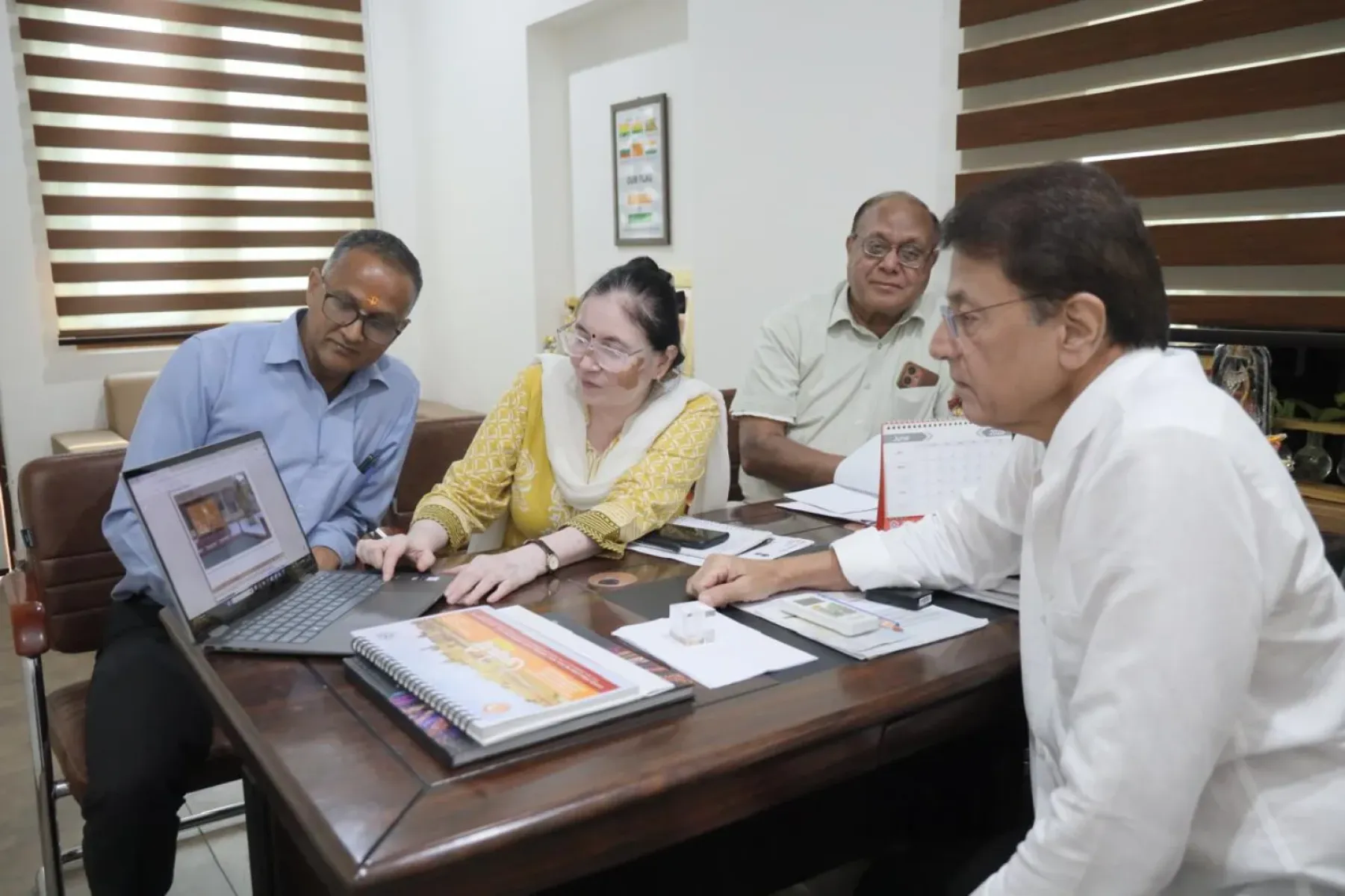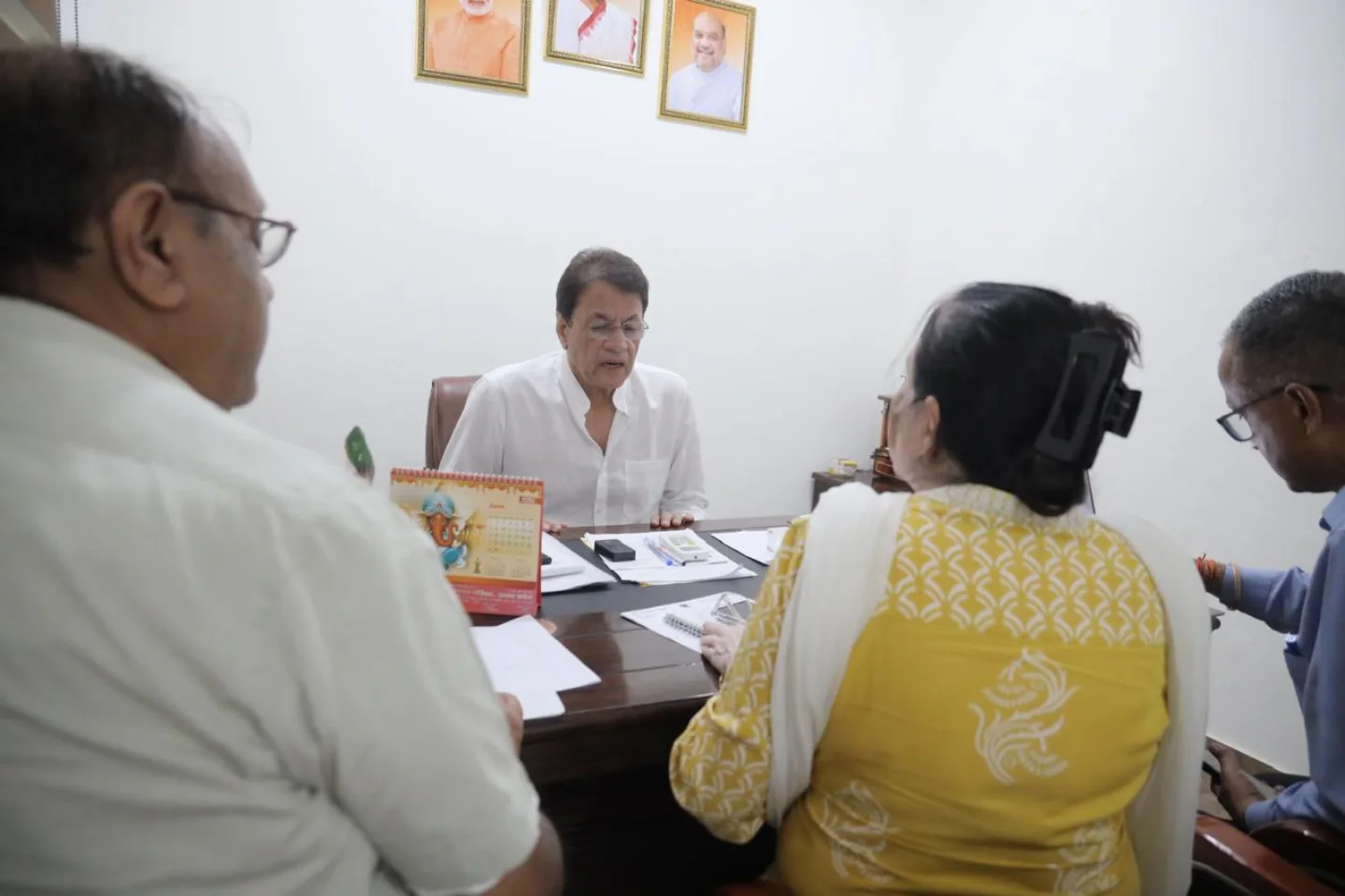UP Tourism Proposals Enhance Cultural Landmarks In Meerut
Officials discuss temple restoration, tourism path upgrades and memorial beautification in UP.

Image: Instagram
In Meerut, a significant move in the realm of cultural and religious tourism is underway. Senior tourism officials met with government representatives to explore ambitious proposals aimed at restoring and enhancing some of the region’s most treasured heritage sites. The discussion, held under the guidance of the Tourism Department’s Joint Director Mrs. Preeti Shrivastava, centered on improving facilities at ancient temples and memorial sites that have long been the heart of local tradition.

Tourism Department Initiatives
Officials outlined plans for the cultural and tourism development of two major religious landmarks. Under the Meerut city assembly constituency, the focus is on the Sidd Peeth ancient Devi and Sati temple, revered for its historical significance and spiritual legacy. Meanwhile, in the Kathour assembly constituency, efforts are proposed to upgrade the Durga temple. These sites not only draw pilgrims but also serve as important cultural hubs that encapsulate centuries of tradition.
During the meeting, Mrs. Preeti Shrivastava engaged in discussions with Minister Jayvir Singh, the tourism and culture minister of Uttar Pradesh, regarding proposals submitted for further development. The proposals aim at facilitating a multifaceted approach to tourism enhancement. One critical aspect of the plans involves beautification projects. These include efforts to establish functional public amenities, as well as to enhance the overall aesthetic appeal of the temple precincts and associated cultural sites.

Discussion Highlights
An intriguing point raised in the deliberations was the need to upgrade the entrance of the Kavad Yatra – a traditional pilgrimage route. The officials emphasized that creating a well-designed gateway and a dedicated Kavad path would not only streamline the visitor experience but also promote the rich tapestry of religious tourism inherent to the region. In addition, the beautification of the martyr’s memorial was identified as another priority, ensuring that this historical site receives the attention it deserves so that its legacy is preserved for future generations.
The proposals go beyond mere restoration. They envisage establishing comprehensive public facilities that cater to both domestic and international visitors. The plan includes improved signage, enhanced landscaping, and modern infrastructure without compromising the historical integrity of the sites. Officials believe that transforming these ancient precincts into well-facilitated tourist destinations will significantly boost local amenities, encouraging a surge in cultural tourism and providing a boost to the local economy.
Cultural Impact And Heritage
The significance of these initiatives is amplified by the cultural symbolism embedded in the region. The meeting ended on a note of solemn patriotism, as echoed by the call “Jay Shri Ram” – a phrase that resonates deeply in the hearts of many in the area. In a broader cultural context, the proposals align with the ongoing national focus on combining heritage conservation with modern public service needs.
Adding depth to the narrative is the presence of renowned cultural icons such as Arun Govil, whose contributions are synonymous with the portrayal of epic Indian traditions. Known widely for his role as Lord Ram in the iconic television series, Govil’s association with cultural heritage has long inspired reverence and pride. His involvement in cultural initiatives, even symbolically through social media and public appearances, reinforces the importance of preserving sites that stand as pillars of India’s historical narrative. Local Instagram posts by figures like Govil, along with hashtags such as #स्वच्छ_और_सुंदर_मेरठ and #सांस्कृतिक_विकास, have strengthened public sentiment toward these developmental measures. These posts serve as a visual testimony to the community’s expectations for a blend of tradition and modernity.
Local residents and cultural enthusiasts alike have lauded the proposals as a timely intervention. They see the planned improvements as a pathway to elevating the status of Meerut as not only a historical town but also as a progressive city that honors its past while paving the way for future growth. The emphasis on restoring temple architecture and refining the pilgrim routes comes at a time when there is an increasing demand among visitors for immersive cultural experiences.
Community leaders have noted that the restoration of these landmarks can have far-reaching benefits. Enhanced religious tourism has the potential to generate increased revenue, which in turn can be reinvested into local infrastructure and public services. Moreover, a well-maintained cultural landscape enriches the social fabric by providing a visual and experiential link to the region’s illustrious past.
The proposals, as discussed, promise a dual advantage: they cater both to the practical needs of modern tourism and the emotional yearning for cultural preservation. As government bodies continue to deliberate on the finer details, the collective optimism among local stakeholders is palpable. They believe that these initiatives could help reposition Meerut on the national tourism map, ensuring that visitors enjoy an engaging and respectful encounter with India’s storied heritage.
In essence, the meeting marked a forward-thinking moment for Uttar Pradesh’s tourism policy. By focusing on the restoration and revitalization of ancient temple sites and memorials, the state is embracing a model of development that synergizes cultural preservation with enhanced public utility. Such measures are expected to not only fortify local pride but also attract tourism that appreciates the intricate blend of artistry, spirituality, and history.
The convergence of administrative resolve and community support sets the stage for a renaissance in cultural tourism in Meerut. As preparations move forward, the state government’s commitment to creating a seamless experience for pilgrims and tourists alike remains a beacon of hope for both preserving heritage and driving progressive transformation.
Read full bio of Cynthia Jean Daniel







